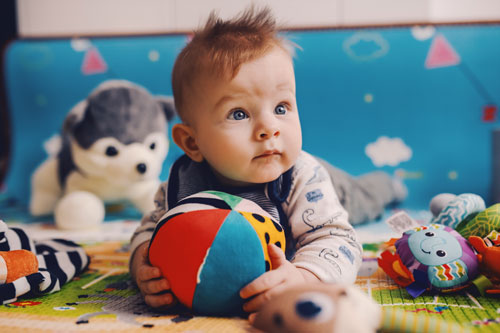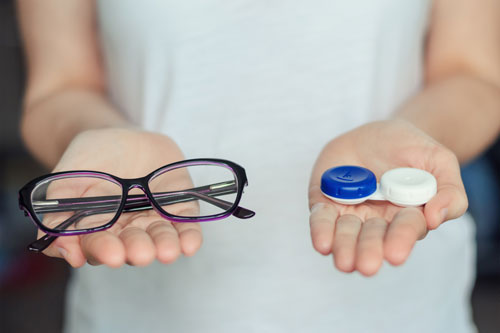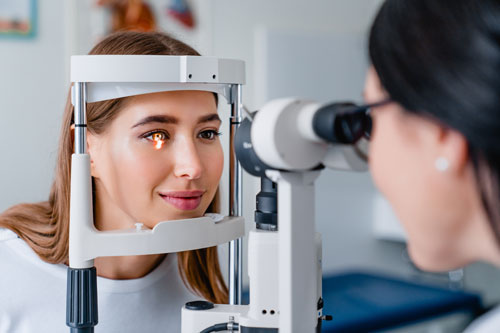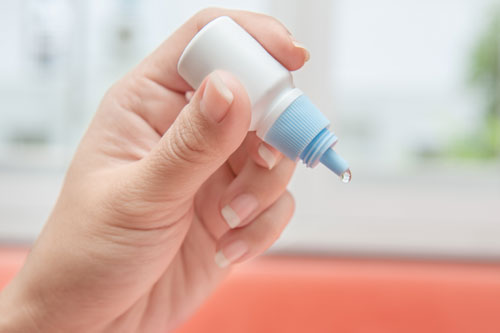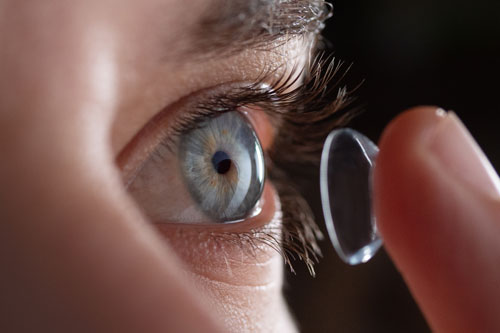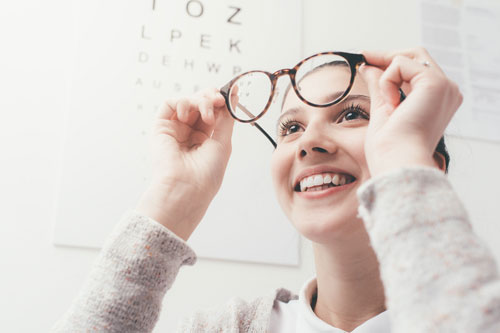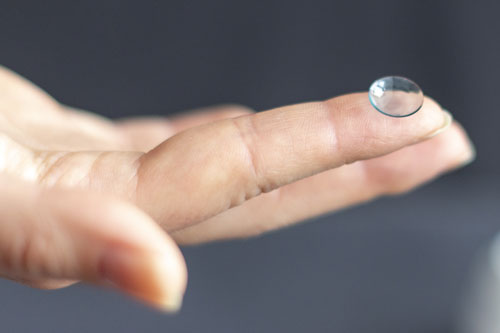Your eyes are constantly producing tears, which is vital to keep your eyes healthy, comfortable, and seeing properly. People suffer from dry eyes because of a chronic lack of lubrication and moisture on the eye’s surface. Tears cover the eye’s surface to keep it moist and wash away dust and debris that could damage the cornea and lead to an eye infection. Read more to learn about the causes and symptoms of dry eye or schedule an exam today to find relief!
Symptoms of Dry Eye
Dry Eyes, also called dry eye syndrome or dry eye disease, affects each person differently. Individuals may experience only one symptom or multiple symptoms outlined below, but the good news is there is no reason to suffer from these symptoms.
- Burning Eye Sensation
- Scratchy or Itchy Eye Sensation
- Aching and Sore Eye Sensation
- Dry Eye Sensation
- Foreign Body Sensation (Feeling like something is in your eye.)
- Fatigued or Tired Eyes
- Red Eyes
- Light Sensitivity
- Excessive Tearing
- Blurred Vision
Some of these conditions may be present at all times or only at certain times.
Some people may only notice discomfort when trying to wear contact lenses or when they are in windy conditions that cause air to be blowing directly on their face (like when driving with the vent blowing). Whether you suffer all the time or some of the time, we can determine a treatment plan that helps.
Causes of Dry Eye
Like with many health conditions, eye-related and otherwise, there isn’t one clear cause, but instead many potential causes. Similar to symptoms, some people may have more than one cause contributing to their dry eye symptoms.
Lifestyle
- Computer use | When working at a computer or portable digital device, we tend to blink our eyes less frequently, leading to greater tear evaporation.
- Contact lenses | Many people express exaggerated dry eye symptoms when wearing contact lenses.
- Indoor environment | Air conditioning, ceiling fans, and forced-air heating decrease indoor humidity and increase tear evaporation.
- Outdoor environment | Dry climates, high altitudes, and dry or windy conditions have lower humidity.
- Air travel | The air in airplanes is intended to be extremely dry.
- Smoking | Smoke can become an eye irritant.
Medical
- Aging | Dry Eye symptoms can become apparent at any age but are more common as people age.
- Menopause | Post-menopausal women are at greater risk than same-aged men.
- Health Conditions | Certain diseases can contribute to dry eye problems. This is why it is important to share your complete medical history with your eye care provider.
- Medications | Many prescription and nonprescription medicines increase the risk of dry eye symptoms. For this reason, remember to share a full prescription list with your eye care provider.
- Eyelid Problems | Incomplete closure of the eyelids when blinking or sleeping can cause severe dry eyes.
- Eye Surgery | LASIK, Cataract Surgery, and other corneal refractive surgery can cause dry eyes. However, in most cases, dry eye discomfort after surgery is temporary.
- Allergies | Allergies and some allergy medications can cause dry eyes.

If you believe you may be suffering from dry eye, reach out to your eye doctor to schedule an eye appointment to discuss your symptoms and determine a treatment plan that will work best for you.
Ready to Schedule An Appointment?
We look forward to seeing you in our office soon. To schedule an appointment, click the schedule button or give our office a call.

